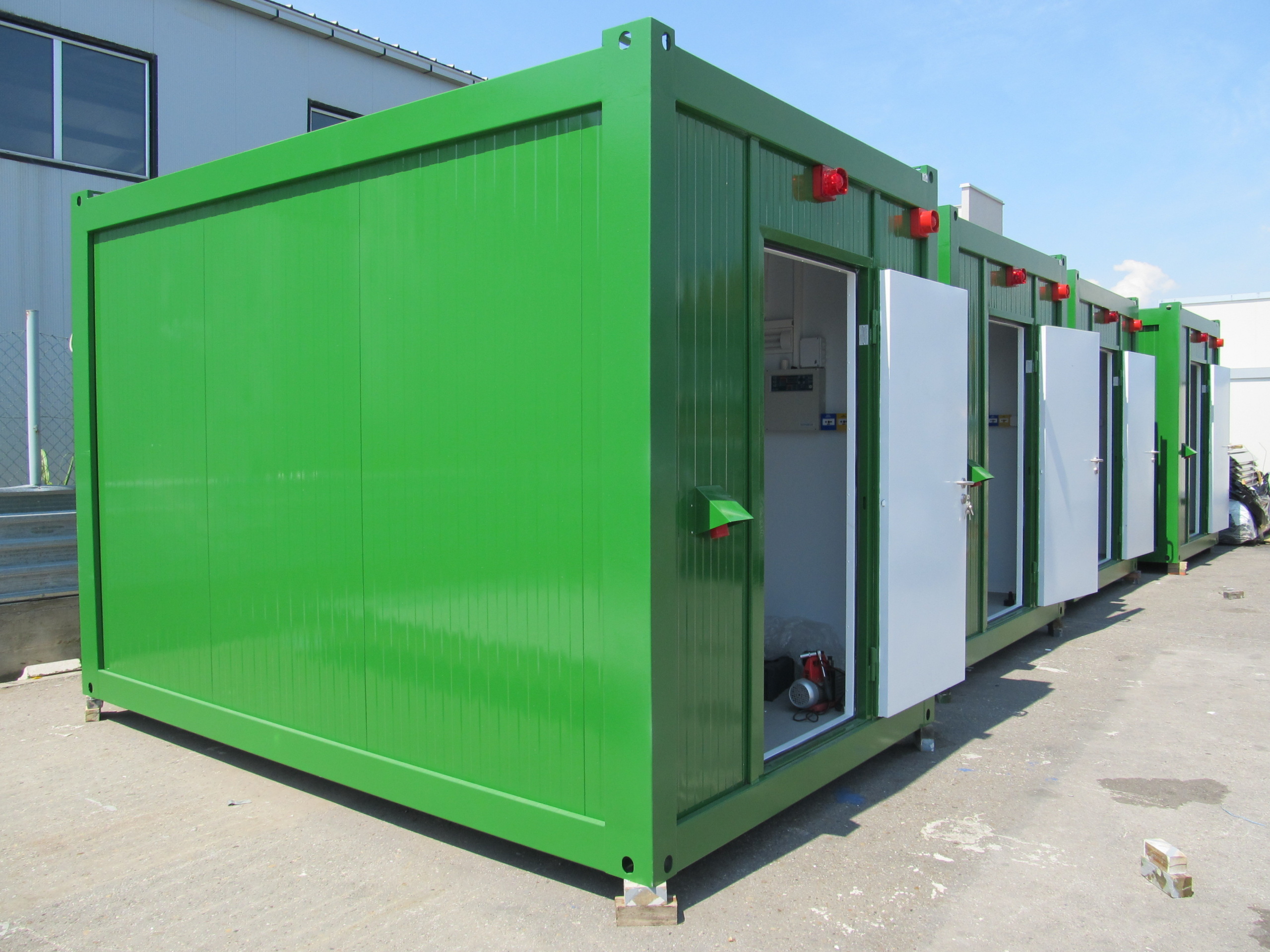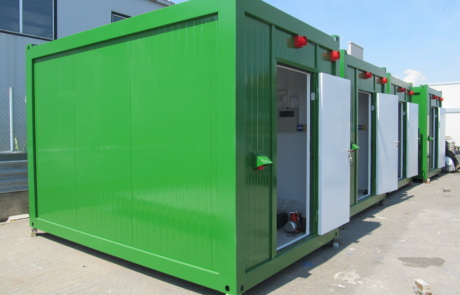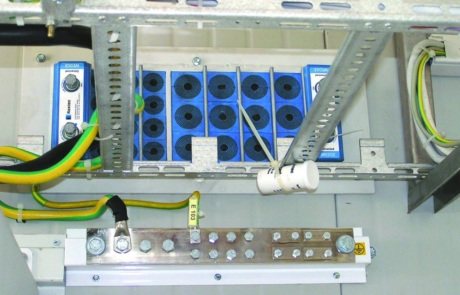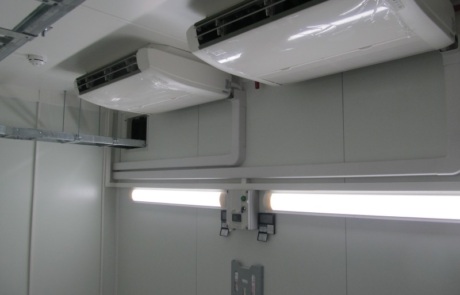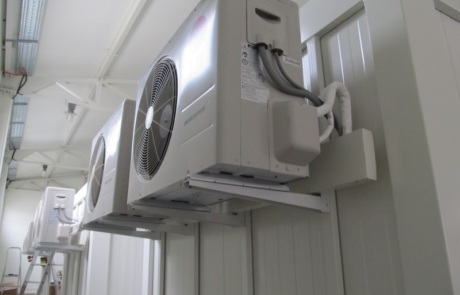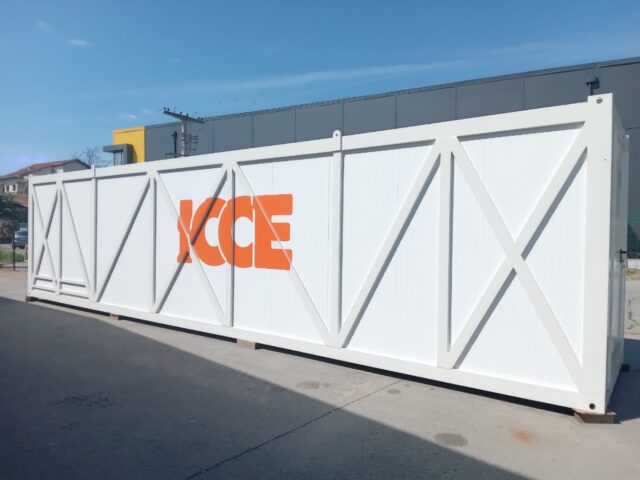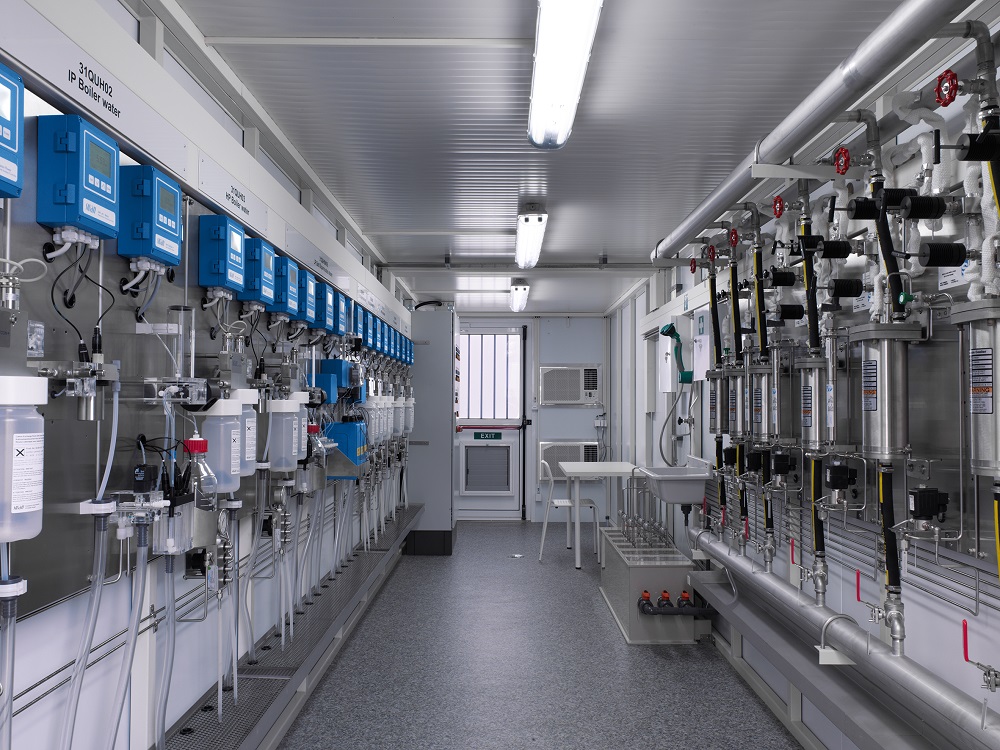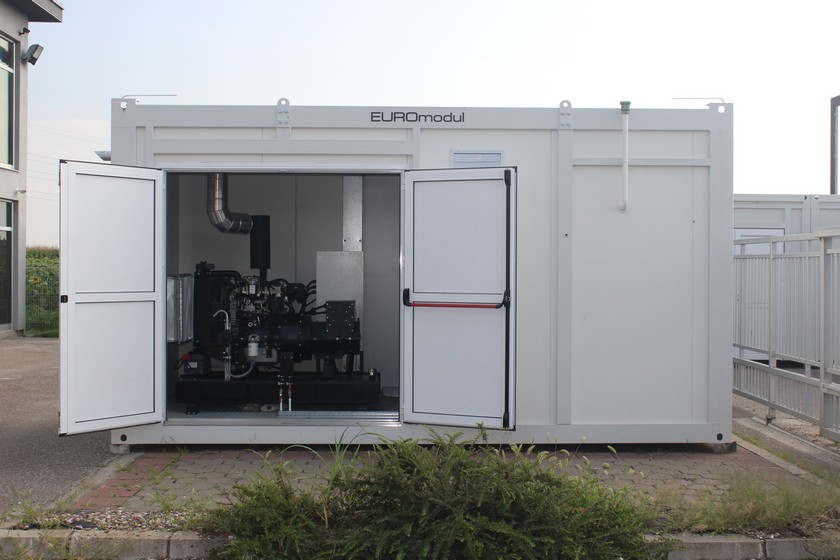From 2013 until 2104 EUROmodul delivered 10 pieces of special containers – Telecom shelters for the Navy. The shelters are fitted with telecommunication and navigation equipment for a Naval Ministry.
We designed the shelters on a steel-frame basis and to be easily portable. Therefore, they can be transported by land, air or sea. The Navy uses these shelters as protection for the sensitive equipment for monitoring of Naval traffic.
Electrical Power: we equipped the shelters with power supply, redundant air conditioners, interior lighting, and cable inlet sealing by Roxtec.
The telecom shelters for the Navy have been equipped with special air condition system to ensure proper work of sensitive equipment. In addition, EUROmodul installed fire detection and extinguishing system. Installation includes alarm and allows for shutdown in case of electrical surges to protect interior and equipment from flame destruction, because the containers are in a remote and inaccessible location.
Generally, telecom shelters as prefab solutions are:
- Cost effective and easily for handling
- we can add special equipment including for communications, signaling, and monitoring
- they protect the equipment from dust and water.
- can have very good thermal insulation and be energy efficient
- we can fit them with solar energy for remote sites
- have a long life span of 10+ years
We equip the shelters with cable inlet sealing (Roxtec or equivalent). Additionally, we equip all telecom shelters with cable trays and ladders.
Telecom containers serve several key purposes in the telecommunications industry:
Protection: They protect sensitive telecommunication equipment, ensuring it operates under optimal conditions by shielding it from environmental factors like dust, moisture, and temperature extremes.
Adaptability: These containers can be customized to meet specific equipment requirements, making them versatile for various telecom applications.
Durability: Telecom containers are built to withstand harsh weather conditions and potential vandalism, minimizing the need for repairs and replacements.
Mobility: Being containerized, they can be easily transported and deployed to different locations, including remote areas, providing flexibility for both temporary and permanent installations.
Efficiency: Containers are lightweight and standalone, making them efficient for running large distributed applications and supporting agile deployments.
Overall, telecom containers play a crucial role in maintaining the reliability and efficiency of communication networks.

